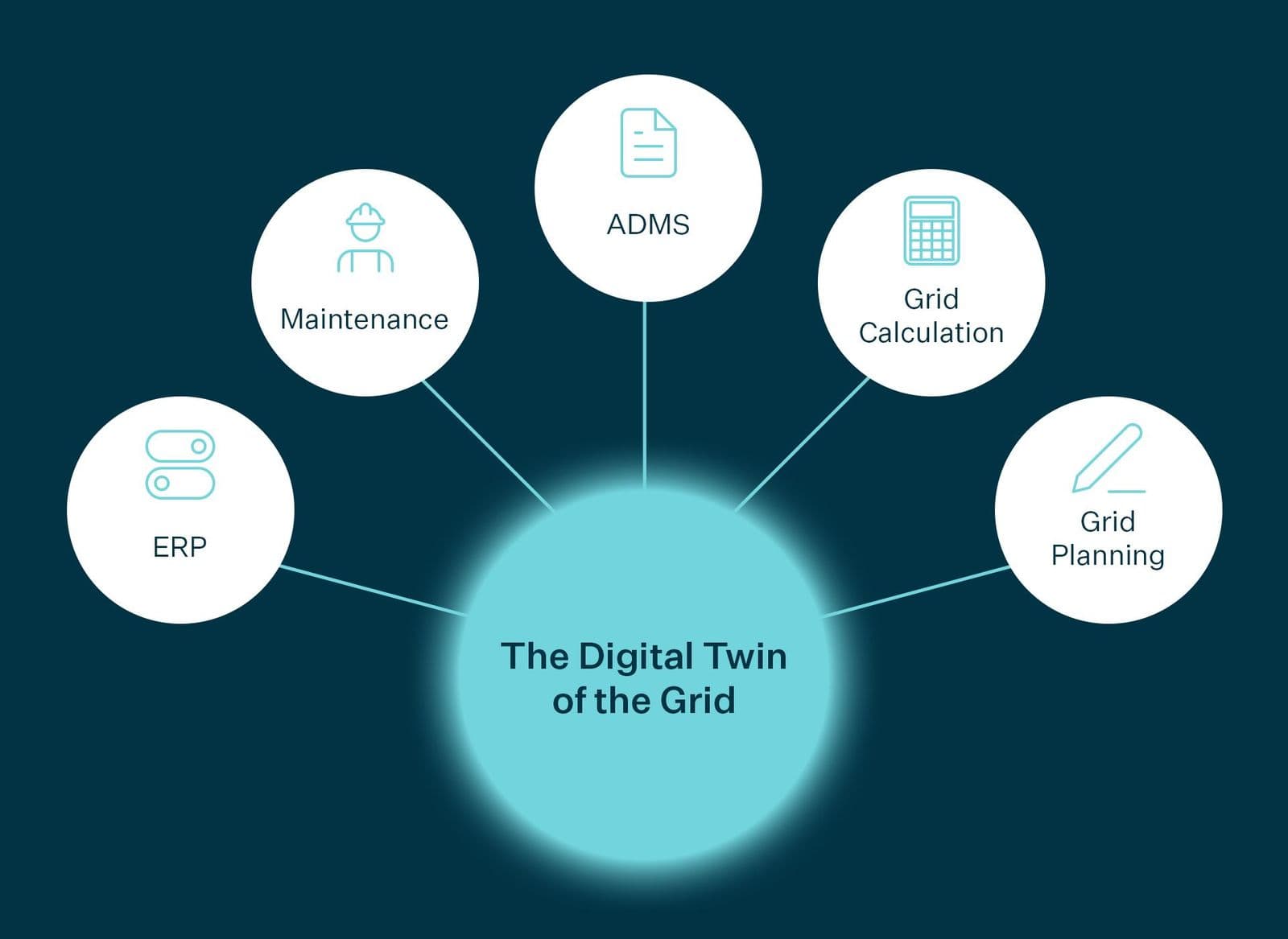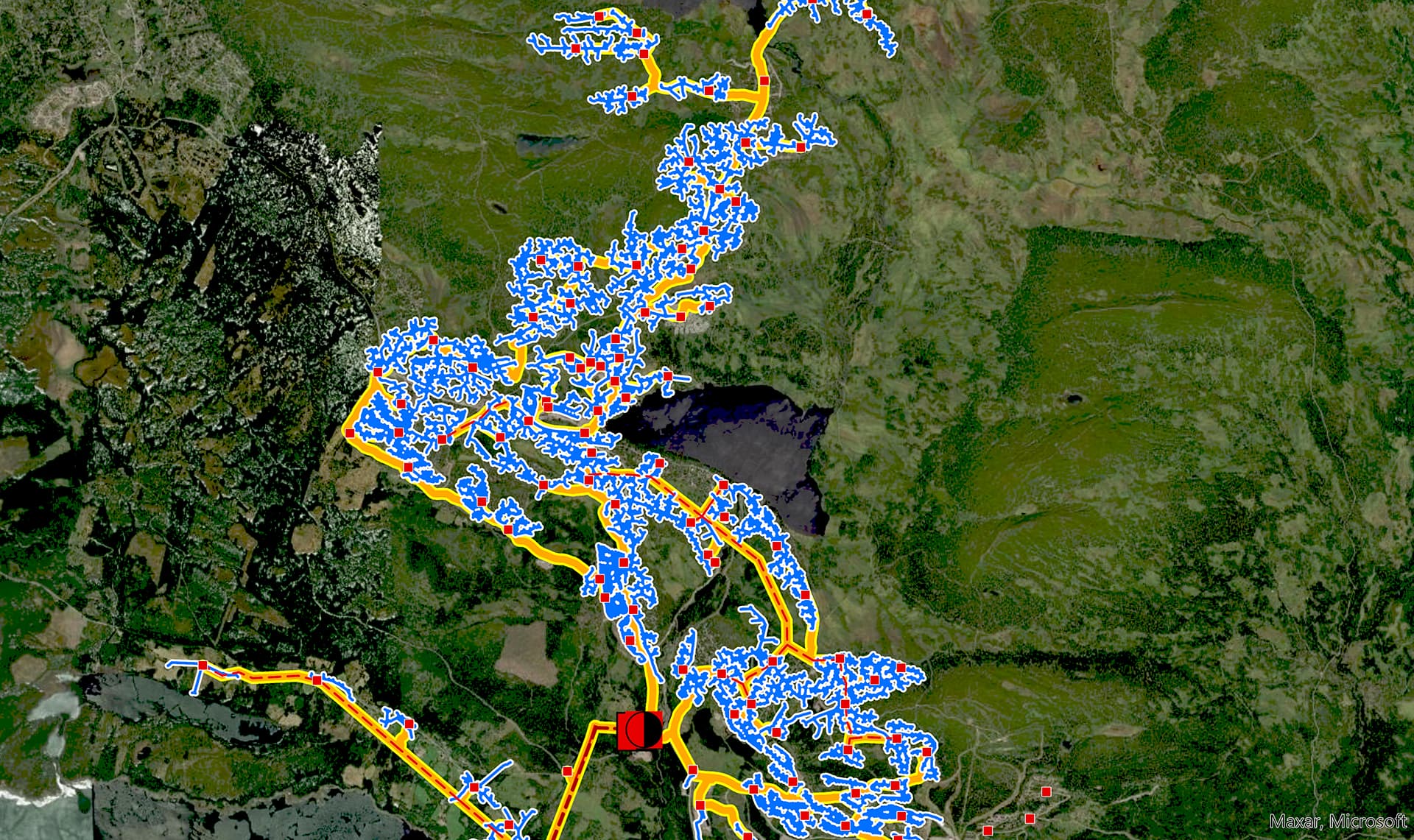In our previous story, 'From Watts to Weather', we delved into the evolving landscape of energy utilities. If you haven't read this, we highly recommend you start there to gain a comprehensive understanding of the journey so far. This foundational article sets the stage for our ongoing exploration into the realm of digital twins and the unparalleled expertise Volue brings to the table.
Jens Dalsgaard, Principle Product Owner, Power Grid, Volue, takes up the second in our article series below.
Visualising the Digital Twin
A digital twin represents a precise virtual replica of the entire grid infrastructure. Within this digital realm, every cable, including its geometry and critical attributes like commissioning date, cable type, and electrical characteristics, is meticulously documented. This thorough documentation extends to capture connections with other grid components.
Similarly, substations are detailed in digital form, right down to specifics like transformers, breakers, fuses, and their interconnections, both internally and with external cables and overhead lines. Every component and line forming the grid is meticulously catalogued, along with its network of connections, ranging from high voltage to medium and low voltage segments.
Frequently, IT departments and SMEs tend to view data within the confines of a specific purpose. However, within an electric utility, numerous business processes organically revolve around the grid, making comprehensive grid data utilisation essential. It's important for IT departments to embrace the expansive landscape of data applications, even if this broader vision has not yet taken root. They have traditionally operated within a stable and somewhat conservative industry, but the winds of change are undeniably sweeping in. Remember, the digital twin serves as the essential cornerstone for achieving data-driven operations, automating business processes, and optimising grid operations.
Understanding the concept of a digital twin is a significant undertaking in itself. We have included a selection of images that provide a preview of the digital twin intricacies. However, delving into and comprehending every nuanced detail demands the expertise of seasoned partners. Volue stands as precisely that partner, possessing the experience and insight necessary to navigate and make the most of the digital twin's complexities.
Intricacies of the digital twin
Through this digital twin representation of the distribution grid, we can provide essential data for critical IT solutions and business processes.
Data is the key to business process optimisation. With a complete digital twin, any worker - in-house or in the field - can have up-to-date access to grid information and analysis capabilities. This democratises the clarification and decision power throughout the organisation, engaging everyone in the upholding of high and consistent data quality.
By providing access to a digital twin, the tasks of planning new grid or reinforcing existing grid can be brought into the hands of all skilled workers in your organisation, not just the few in the office. This can lead to a more efficient and effective process, which can improve the quality of service provided to customers.

Investing in Excellence: Why CxOs Must Prioritise High-Quality Migrations as the Bedrock of Data-Driven Operations
Migrating to a new platform is rarely a walk in the park and transitioning to ArcGIS Utility Network (UN) is no exception. In the world of utilities, where data is the lifeblood of operations, ensuring a seamless transition is paramount.
You might have heard the notion that migrating in general should be straightforward, especially if your electric utility or your typical vendor has experience with other migrations. After all, how hard can it be?
However, let's unravel this. The truth is, migrating to UN is a unique challenge that demands specialised expertise and sophisticated tools. We understand that data alignment, unification, and the pursuit of the highest data quality within UN are not mere checkboxes on a to-do list. They are the linchpin of immediate value proposition and the gateway to reaping the full benefits of this transformative platform.
The strict data requirements set by Utility Network make the migration process more challenging than most other migrations. One of these is connecting to terminals, which is typically not available in the source system. Additionally, the migration process requires handling stacked features, duplicate vertices, and piggy-tails in cable/overhead line geometries.
To ensure that the migrated data fully supports critical business requirements set by analyses and integrations to other core systems, substantial data refinements and alignments are necessary. Despite the complexity of the migration process, it is essential to ensure that the data is migrated accurately.
Generic experience in migrations won't cut it. It's like comparing a road trip to scaling a mountain – both require navigation skills, but the terrain and the tools needed are vastly different. It might seem reasonable to cut corners during migration, but this is a temptation best resisted.
CxOs, take heed: prioritising high-quality migrations is not an indulgence but a strategic necessity
Failing to do so can lead to costly consequences down the road, from data inconsistencies to operational inefficiencies. The initial investment in a meticulous migration pays dividends in the form of a streamlined, data-driven operation.
Migrating to UN is an investment in the future, and the dividends it yields extend far beyond the migration itself. It's a choice that ensures your utility's readiness for the data-driven future, where every piece of information holds the power to transform and elevate your operations.
Jens DalsgaardPrinciple Product Owner, Power Grid, Volue
Navigating the Complexities: Volue Delivers Best-in-Class Migrating to ArcGIS Utility Network
When it comes to migrating to ArcGIS Utility Network, Volue stands unrivalled. Our track record speaks volumes, having performed migrations for one of Scandinavia’s largest electric utilities with remarkable success, and we currently performing migrations for another of Scandinavia’s largest electric utilities.
This achievement allows immediate traceability inside ArcGIS UN across voltage levels without the need for prior or subsequent data cleansing – a testament to our commitment to data quality.
With meticulous precision, we align data from multiple sources during migration, creating systematic hierarchical structures and assigning functional names to every piece of equipment within substations, cabinets, and poles.
Even for a grid serving a million utility customers, comprising more than 10 million features and 5 million associations, our expertise shines through. We've achieved an astounding 99.95% migration success rate of features without dirty areas. Such low numbers of data issues allow immediate value proposition without first having to spend thousands of man-hours data cleansing. We don't just migrate data; we ensure it's transformed into an asset of unparalleled quality, setting the stage for a data-driven future in utility operations.
In our next post, 'Pioneering the Future: Volue's Game-Changing SaaS Grid Calculation Capabilities', we'll delve deeper into the cutting-edge world of SaaS-based grid calculations. Discover how Volue is leading the charge, not only against ArcGIS Utility Network but also against any other structured data source. Join us as we explore the transformative power of this innovation and its potential to reshape the way we approach grid management and data analysis.



